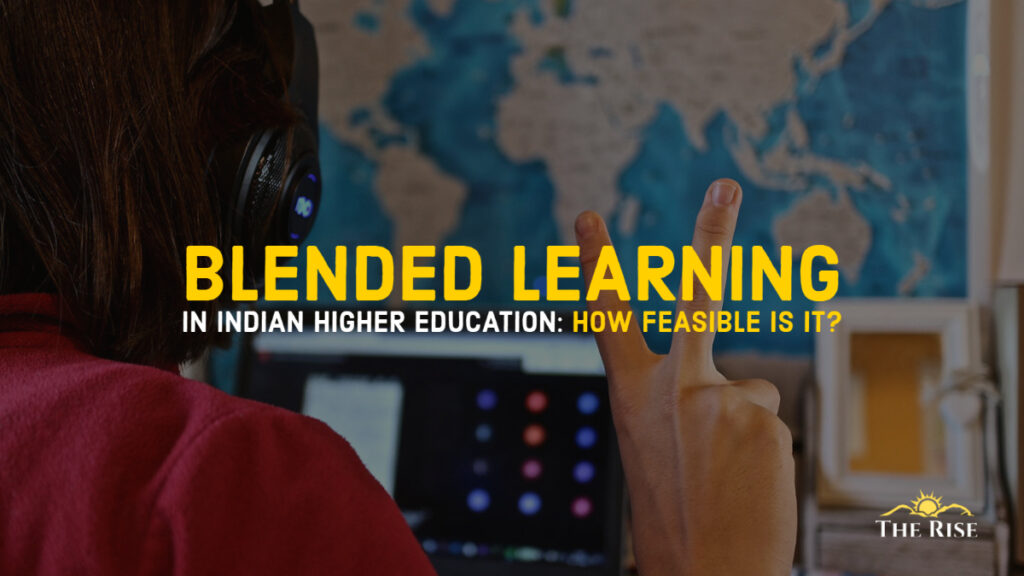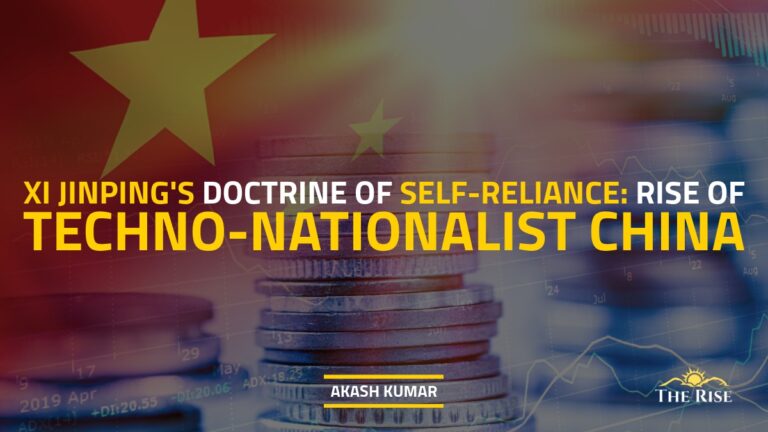Holistic and collective brainstorming across the HEIs is required before exercising the major shift from the conventional face-to-face teaching approach lest blended learning may have limited cosmetic value.
Accolades to University Grants Commission (UGC) for out of the box thinking in allowing the higher education institutions (HEIs) to teach up to 40% syllabus of each course (other than SWAYAM courses) through online mode and remaining 60% of the syllabus in the offline mode along with their examinations in the respective mode. Such a mixed-mode of teaching subjects is referred to as blended learning (BL). It is the educational practice of combining digital learning tools with more traditional classroom face-to-face teaching with both the student and the teacher physically located in the same space in ideal conditions and extensive use of digital tools. It is pertinent to assess the feasibility of blended learning in Indian higher education.
The concept note circulated in this regard has evoked mixed reactions in the academic community. However, the call for a paradigm shift in teaching pedagogy to BL does not appear unreasonable due to the prevailing circumstances. Among different reasons for discussions about such pedagogy, the disruption of normal teaching-learning processes on campuses of HEIs for the last two academic sessions and certain aspirations of National Education Policy 2020 happens to be the key ones.
Unequivocally, all of HEIs had partly or fully resorted to online mode to sustain teaching-learning activities during the lockdown, though it has been a very bumpy ride till now. Nevertheless, this has accelerated the thinking for arriving at some appropriate alternatives to such disruptions while attempting to provide ease of access, equity and make it student-centric enriching the quality of education. Also, the rocketing of digital learning platforms and learning management systems along with the progression of students in the absence of traditional mode of teaching & evaluation has catalysed the thinking that it is possible to mitigate the role of on-campus teaching-learning processes.
Also Read: Educational Supremacy in ‘Vishwaguru’ India: A Long Way to Go
The rocketing of digital learning platforms and learning management systems along with the progression of students in the absence of traditional mode of teaching & evaluation has catalysed the thinking that it is possible to mitigate the role of on-campus teaching-learning processes.
Earlier too, the methodological transformations have been tried for motivating students to build their own learning through flipped classroom and gamification strategies adopted by teachers. But, the reliance on self-learning by students necessitates developing critical thinking, enhanced engagement in the learning process, and cultivating interaction amongst students for mutual development which cannot be accomplished without teachers being adequately trained for practising the teaching pedagogy they wish to use. There always exists a gap between theoretically forecasted advantages of the methodological transformations in teaching-learning processes and the actual accrued ones. As a result, the conventional mode of teaching in face-to-face mode has proved to be the most effective one, although any supplementary attempt to enrich it for enabling better learning is praiseworthy.
Also Read: Students Steering the Education Wheel through Stormy Virus
Now, with the BL under consideration having a predefined proportion of online and offline modes of teaching in each subject is bound to have certain implications. The projected benefits of BL include the increased learning skills, greater access to information, improved satisfaction and learning outcomes, and opportunities both to learn with others & to teach others. These advantages, as envisaged from the blended learning, demand rigorous introspection in the context of the country’s socio-economic conditions, preparedness of HEIs, requisite digital infrastructure, student experiences about the online teaching-learning-evaluation in the last two academic sessions, and the public perception on the top of it. It is worthwhile to note that online teaching-learning has been of interest for more than three decades in HEIs worldwide but such study programs are still not plentiful, ergo, the candid assessment of certain aspects of BL is opportune.
Deterring Digital Divide
As regards BL depending on online processes, it is prudent to be mindful of the fact that the prevailing challenge of the significant digital divide in the country may not allow a sizeable population to be part of online activities unless these are duly facilitated. Lack of access to poor students and those in locations that are devoid of good internet connectivity will limit the opportunities of collaborating the intellectual endeavours for shared virtual learning across the boundaries.
Also Read: Calibrate Crappy Education in COVID Aftermath
The student aspirations of flexibility by allowing learning anytime and anywhere, interactivity between students and also with teachers, providing additional digital learning resources, creation of an online community of learners, etc. inevitably require bridging of digital divide at the first hand. Else, the students from well-off classes will be reaping the benefits of the online activities, and those from poor classes will be mere spectators and get inculcated with frustration.
Availability of learning resources
Since time immemorial, the HEIs have been trying to ensure the availability of learning resources through the enrichment of library facilities. But, the absence of compelling requirements of the thoroughness of study in classroom and examinations have evinced changes in study pattern. The ease of availability and open access of generic learning resources digitally has declined the use of library resources by the students. Consequently, it is imperative to augment the teaching-learning-evaluation processes for ensuring thorough learning. BL may help in achieving the targeted learning levels provided the students are facilitated by the good quality learning resources and teachers make them confront with comprehensive assessment & examination focussing on the holistic learning of respective subject(s). Training of teachers for increasing the rigour of teaching-learning-evaluation processes is equally important for creating a positive impact of BL.
BL may help in achieving the targeted learning levels provided the students are facilitated by the good quality learning resources and teachers make them confront with comprehensive assessment & examination focussing on the holistic learning of respective subject(s).
Virtualization
BL seeks for a predetermined share of online interactions in each subject, meaning thereby that a portion of every subject will be covered in online mode. Contemplating the feasibility of online teaching in each subject raises genuine questions on its rationality, especially in the courses requiring hands-on training. It is arduous to teach such courses online. Even the mix of face-to-face classes and online classes in laboratory-based subjects like those of science, engineering, technology, medicine, art & design, etc. will not allow students to thrive in complementary virtual interactions. However, supplementing the on-campus classes of HEIs with digital content will definitely be gainful.
Technology integration
BL aims at making learning resources and experiences repeatable, reliable, and reproducible with the use of technology. The technology integration in the conventional teaching pedagogy for making it partially offline and online will levy cost as well as huge human resource engagement over a period of time. A cue can be drawn from the fact that even all HEIs of the country do not have active websites/portals that are fully functional and free from dead pages to date!
Therefore, envisioning effective technology integration for BL across all HEIs in the country is a delusion. Howbeit, the success of BL in some HEIs will be stellar and should not be misconstrued for being mandated to others without nurturing them for technology integration.
Also Read: Technological Transformation in Higher Education: Myths and Realities
Alongside, the HEIs have to incur huge expenditures for equipping themselves with suitable learning management system (LMS), enterprise resource planning (ERP) software, internet bandwidth of 1-10 Gbps, Wi-fi campus, intranet in campus, computers, data storage systems, smart classrooms, virtual laboratory facilities, studio facility, plagiarism checking software, domain-specific software, teachers & staff training, etc.
Peer learning
The role of cooperative learning amongst students in school classrooms (and afterwards in HEIs) has contributed significantly to their overall learning. It is the reticence of students in the formal teaching-learning process that demands peer interaction for mutual learning. The online mode is likely to reduce student participation in the learning process, which means peer learning will have to be made predominant through group activities or in other ways. Also, special efforts may be required for creating effective provisions for non-verbal interactions like that of the chatroom, gesture buttons, etc. during online teaching.
Offline and online evaluation
In view of the same subject being taught in two modes, the BL may call for online evaluation for the content shared in online mode; and offline evaluation for the content shared in offline mode. Philosophically, there is a rationale behind this. But, the limitations of duly proctored online assessment need to be addressed. The continuous comprehensive evaluation, open book / closed book examination models, group examinations, viva-voce, presentations, e-portfolio, etc. have been prescribed by UGC as evaluation strategies. Undoubtedly, the evaluation strategies are meaningful but the challenge lies in their execution with integrity.
Also Read: Time to Rethink and Reform the Examination System
Obviously, the HEIs intending to introduce BL will be invoking its governance, academic community, students, and supporting staff together for creating the framework to implement it. But utmost care is to be taken to make certain that methodological transformation does not incur any loss to the stipulated class time, fairness of processes, student-centric teaching processes, digital divide, and associated infrastructure support. It goes without saying that the partial realization of teaching-learning-evaluation processes in online mode will call for the enabling environment as well to achieve the desired objectives of increased student engagement in learning, enhanced teacher and student interaction, responsibility for learning, time management and flexibility, improved student learning outcomes, enhanced institutional reputation, more flexible teaching and learning environment, more amenable for self and continuous learning, and better opportunities for experiential learning. Holistic and collective brainstorming across the HEIs is required before exercising the major shift from the conventional face-to-face teaching approach lest BL may have limited cosmetic value.
Disclaimer: The views expressed in this article are of the author solely. TheRise.co.in neither endorses nor is responsible for them.
About the author
Prof. Onkar Singh is the Vice Chancellor of Veer Madho Singh Bhandari Uttarakhand Technical University, Dehradun, He has been the Founder Vice-Chancellor of the Madan Mohan Malaviya University of Technology, Gorakhpur (U.P.). He is a Professor of Mechanical Engineering at Harcourt Butler Technical University, Kanpur (U.P.).











Equip country’s learners with computer and internet before bringing online education.
Poor students suffered a lot in COVID.
Pingback: NEP 2020: Issues and Implications - TheRise.co.in
Pingback: In Defence of Higher Education - TheRise.co.in
Pingback: Supreme Court on Access to Education - TheRise.co.in
Pingback: Industry 5.0: Metamorphosing Requires Engineers From All Domains